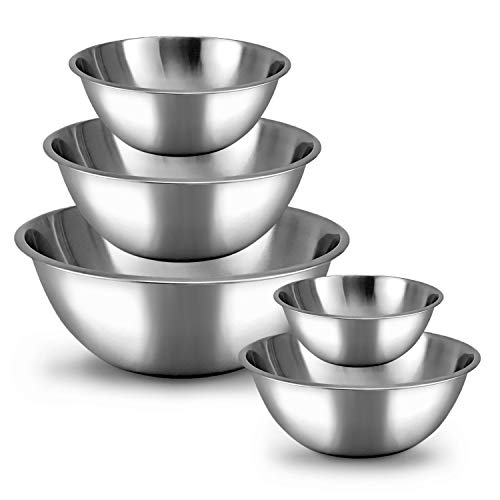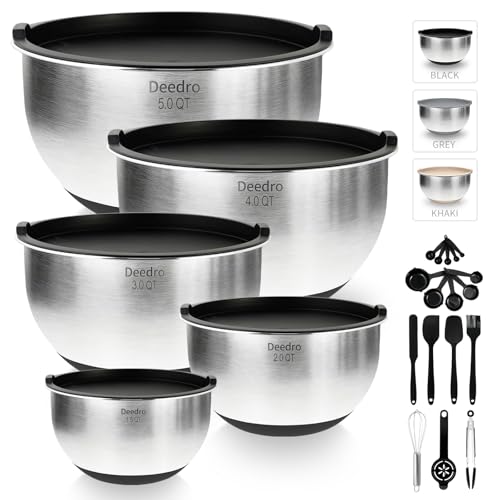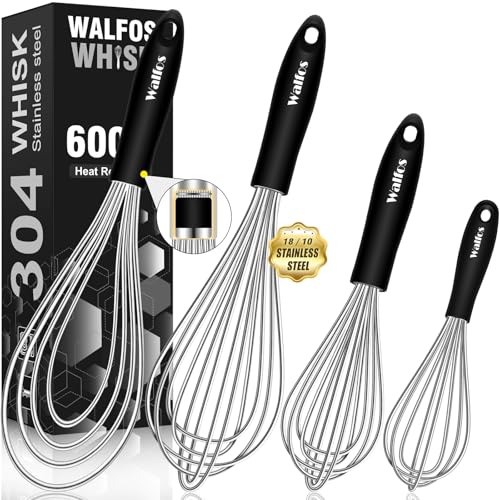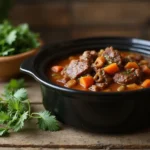We’ve all experienced that moment at a Korean BBQ restaurant when the perfect bite of grilled meat meets an incredible dipping sauce that makes everything taste ten times better. That magical combination doesn’t have to stay at the restaurant – we can easily recreate these authentic Korean BBQ dipping sauces at home with just a few simple ingredients.
Korean BBQ dipping sauces are the secret weapon that transforms ordinary grilled meats into extraordinary culinary experiences. These sauces balance sweet, salty, spicy, and umami flavors in ways that complement the smoky char of barbecued meats perfectly. From the classic ssamjang to tangy sesame oil blends, each sauce brings its own unique personality to the table.
We’re sharing our favorite Korean BBQ dipping sauce recipes that’ll elevate your next grilling session. These authentic flavors will have your family and friends asking for the secret to your incredible Korean BBQ spread.
Ingredients
We’ve carefully selected ingredients that create the perfect balance of flavors for our Korean BBQ dipping sauce. Each component plays a crucial role in building the authentic taste profile that makes Korean barbecue so irresistible.
For the Base Sauce
- 3 tablespoons soy sauce (low sodium preferred)
- 2 tablespoons rice vinegar
- 1 tablespoon sesame oil
- 1 teaspoon sugar
- 2 cloves garlic, minced
- 1 green onion, finely chopped
- 1 teaspoon toasted sesame seeds
- 1/2 teaspoon fresh ginger, grated
For Flavor Variations
Spicy Version:
- 1 teaspoon gochugaru (Korean red pepper flakes)
- 1/2 teaspoon Korean chili paste (gochujang)
Sweet and Tangy Version:
- 1 tablespoon honey or brown sugar
- 1 teaspoon fresh lemon juice
- 1/4 Asian pear, finely grated
- 2 tablespoons fresh cilantro, chopped
- 1 tablespoon fresh perilla leaves, chopped (or substitute with mint)
- 1/2 teaspoon lime zest
Equipment Needed

Making our Korean BBQ dipping sauce requires minimal kitchen equipment that most home cooks already have on hand. We’ll walk through each essential tool needed to create these flavorful accompaniments for your grilled meats.
Sharp Knife and Cutting Board form the foundation of our prep work. We use these to finely mince garlic and ginger while chopping green onions and scallions to the perfect size. A quality chef’s knife ensures clean cuts that release maximum flavor from our aromatics.
Mixing Bowls in various sizes help us combine ingredients evenly before serving. We recommend having at least two medium bowls available since some recipes require separating wet and dry ingredients initially. Glass or stainless steel bowls work best as they don’t retain flavors from previous uses.
Small Saucepan becomes essential when preparing cooked variations like our sweet and savory Korean BBQ sauce. We need this for simmering ingredients together and properly dissolving sugar while allowing flavors to meld. The saucepan also helps us thicken sauces with cornstarch when creating glossy glazes.
Whisk or Mixing Spoon ensures our ingredients blend smoothly without lumps. We prefer a small whisk for emulsifying sesame oil with vinegar and soy sauce. A wooden spoon works perfectly for stirring thicker pastes containing gochujang and doenjang.
Dipping Bowls or Small Serving Plates present our finished sauces beautifully alongside grilled meats. We suggest having individual portions ready for each guest. Small ceramic bowls or traditional Korean banchan dishes create an authentic presentation.
Measuring Cups and Spoons guarantee consistent results every time we make these sauces. Precise measurements matter especially when balancing the sweet, salty, and spicy elements that define authentic Korean BBQ dipping sauces.
Instructions

Creating authentic Korean BBQ dipping sauce requires careful preparation and attention to flavor balance. We’ll guide you through each step to ensure your sauce achieves the perfect harmony of sweet, salty, spicy, and umami flavors.
Prep the Aromatics
We start by finely mincing 1 clove of garlic and chopping 2 tablespoons of onion into small pieces. The aromatics form the foundation of our sauce, providing depth and freshness that elevates the entire flavor profile. Toast ½ teaspoon of sesame seeds in a dry pan for 2-3 minutes until golden brown and fragrant. Set these prepared ingredients aside as we build our base sauce.
Mix the Base Sauce
We combine our fermented soybean paste and Korean chili paste first, creating the umami-rich foundation. In a mixing bowl, we add 2 tablespoons of doenjang and ½ tablespoon of gochujang, stirring until smooth. Next, we incorporate 1 teaspoon of sesame oil, 1 teaspoon of rice syrup, our minced garlic, and chopped onion. The toasted sesame seeds get folded in last to maintain their texture and provide a delightful crunch in every bite.
| Ingredient | Amount | Purpose |
|---|---|---|
| Doenjang | 2 tbsp | Umami base |
| Gochujang | ½ tbsp | Spicy heat |
| Sesame oil | 1 tsp | Richness |
| Rice syrup | 1 tsp | Sweetness |
| Garlic | 1 clove | Aromatic depth |
| Onion | 2 tbsp | Fresh flavor |
| Sesame seeds | ½ tsp | Texture |
Adjust Seasoning and Consistency
We taste our sauce and make adjustments based on our flavor preferences. More gochujang adds heat while additional rice syrup increases sweetness. If the sauce seems too thick, we thin it with water one teaspoon at a time until it reaches the perfect dipping consistency. Rice vinegar brightens the overall flavor when added sparingly, creating better balance for our Korean BBQ meats.
Create Flavor Variations
We enhance our basic recipe by incorporating different elements for unique flavor profiles. Chopped pistachios add unexpected crunch and nuttiness to our sauce. A small amount of wasabi paste creates pungent heat that complements grilled beef particularly well. Extra toasted sesame seeds intensify the nutty flavor profile when we want a more robust sesame taste in our final sauce.
Storage Instructions

Proper storage keeps our Korean BBQ dipping sauces fresh and flavorful for multiple meals. Following these guidelines ensures we maintain optimal taste and quality.
Refrigerator Storage
We recommend storing all homemade Korean BBQ dipping sauces in airtight containers within the refrigerator. Our sauces maintain their best quality for up to 1 week when properly refrigerated.
Place containers in the coldest part of your refrigerator to maximize freshness. Ssamjang and soy-based sauces may separate slightly during storage due to their oil content. Simply stir the sauce well before each use to restore its smooth consistency.
The fermented ingredients in ssamjang actually develop deeper flavors over the first few days of refrigeration. We find that our cho ganjang maintains its bright acidity best when consumed within 3-4 days of preparation.
Freezer Storage
Freezing Korean BBQ dipping sauces is not recommended due to important texture and flavor degradation. Fresh ingredients like onion and garlic lose their crisp bite when frozen and thawed. Sesame oil can become cloudy and separate permanently after freezing.
Emergency freezing is possible using freezer-safe containers for up to 1 month maximum. Thaw frozen sauces completely in the refrigerator before serving. Expect noticeable changes in texture and some flavor loss even with proper thawing techniques.
We strongly advise making smaller batches more frequently rather than attempting to freeze these delicate sauces. Fresh preparation always yields superior results for our Korean BBQ dining experience.
Serving Suggestions

Now that we’ve perfected our Korean BBQ dipping sauce we’re ready to explore the best ways to serve and enjoy it. These serving recommendations will help us make the most of our homemade sauces and create an authentic Korean BBQ experience.
Best Korean BBQ Pairings
We recommend serving our dipping sauces in small bowls alongside a variety of grilled meats that showcase Korean BBQ traditions. Grilled beef varieties like bulgogi and galbi pair exceptionally well with our ssamjang for their rich umami flavors. Pork belly (samgyeopsal) becomes even more delicious when dipped in our tangy cho ganjang sauce.
Our chicken pieces benefit from the balanced flavors of any of our sauce variations. We also love serving grilled vegetables such as mushrooms and zucchini with these sauces to add depth to lighter fare. The sauces complement rich grilled flavors by balancing savory spicy and umami notes perfectly.
For the complete Korean BBQ experience we arrange fresh lettuce leaves and sliced garlic alongside our sauces for traditional ssam wrapping. Rice and kimchi round out the meal and provide additional complementary flavors that enhance the overall dining experience.
Other Uses for the Sauce
Beyond traditional dipping our Korean BBQ sauces serve multiple purposes in the kitchen. We use them as marinades for meats before grilling or pan frying to infuse deeper flavors into proteins. During cooking we apply these sauces as glazes or basting liquids to create caramelized surfaces and enhanced taste.
Our sauces work wonderfully as salad dressing components when combined with additional vinegar and oil for fresh vegetable dishes. We frequently use them as condiments for rice bowls or bibimbap to add authentic Korean flavors to simple meals. Stirring small amounts into soups or stews provides extra depth and complexity to broths and liquid dishes.
These versatile sauces adapt well to fusion cooking applications where we want to incorporate Korean flavors into non traditional dishes. We find them particularly effective for improving stir fries noodle dishes and even as sandwich spreads for unique flavor combinations.
Tips for Perfect Korean BBQ Dipping Sauce

Mastering Korean BBQ dipping sauces requires attention to flavor balance and technique. We’ve discovered that the secret lies in harmonizing four essential taste elements: salty components from soy sauce or doenjang, sweet notes from rice syrup or maple syrup, spicy heat from gochujang or wasabi, and deep umami flavors from fermented pastes and aromatics.
Fresh ingredients make all the difference in achieving authentic flavor profiles. We always use freshly minced garlic and onions rather than pre-chopped alternatives, as they provide superior aroma and texture. Green onions should be crisp and bright, while ginger needs to be firm and aromatic for the best results.
Toasting sesame seeds transforms their flavor completely. We recommend dry-toasting them in a small pan over medium heat for 2-3 minutes until golden brown and fragrant. This simple step intensifies their nuttiness and adds depth to any dipping sauce.
Heat levels deserve careful consideration based on your preferences. Start with smaller amounts of gochujang or wasabi paste, then gradually increase to reach your desired spiciness. Remember that fermented chili paste develops heat over time, so taste and adjust accordingly.
Texture variations elevate basic recipes significantly. We love adding chopped pistachios for crunch in ssamjang or thin jalapeño slices in cho ganjang for both heat and bite. These additions create more complex eating experiences.
| Flavor Balance Element | Primary Ingredients | Adjustment Tips |
|---|---|---|
| Salty | Soy sauce, doenjang | Start with less, add gradually |
| Sweet | Rice syrup, Asian pear | Balance with acid if too sweet |
| Spicy | Gochujang, wasabi | Build heat slowly |
| Umami | Fermented pastes, garlic | Layer multiple umami sources |
Temperature matters when serving these sauces. We serve most dipping sauces at room temperature or slightly chilled to complement hot grilled meats. Cold sauces provide a refreshing contrast that enhances the overall dining experience.
Simplicity often produces the best results. Our classic sesame oil and salt combination highlights the natural flavors of perfectly grilled meat without overwhelming them. Sometimes the most basic preparations create the most memorable meals.
Consistency adjustments help achieve the perfect texture. Add small amounts of water to thin thick sauces or incorporate potato starch mixed with cold water to thicken runny mixtures. The ideal consistency should coat food lightly without being too heavy.
Timing your sauce preparation correctly ensures optimal flavors. We recommend making sauces at least 30 minutes before serving to allow flavors to meld and develop. But, avoid making them more than a day ahead, as fresh aromatics lose their punch over time.
Troubleshooting Common Issues

Even experienced cooks encounter challenges when crafting Korean BBQ dipping sauces. We’ve compiled answers to the most common problems that arise during sauce preparation.
Sauce tastes too salty often happens when we use too much soy sauce or fermented soybean paste. Dilute the mixture with water gradually until the saltiness balances with other flavors. Adding a teaspoon of rice syrup or brown sugar also helps counteract excessive saltiness.
Overwhelming spiciness can ruin an otherwise perfect sauce. Reduce the amount of gochujang or wasabi paste by half in your next batch. We recommend adding more sesame oil or a sweetener like honey to mellow the heat without losing the complex flavor profile.
Lumpy or uneven texture develops when ingredients aren’t properly combined. Thoroughly mix all components using a whisk or fork to break down any clumps. Finely mincing garlic and onion prevents chunky textures that can make the sauce unappetizing.
Incorrect consistency affects both presentation and flavor distribution. Thin sauces lack body and don’t cling to meat properly. Add more fermented bean paste or reduce liquid components to thicken the mixture. Overly thick sauces can be loosened with small amounts of water or rice vinegar.
Flavor imbalance occurs when sweet or sour elements dominate the sauce. Adjust vinegar quantities gradually if the sauce tastes too acidic. Balance excessive sweetness by adding more soy sauce or a pinch of salt to restore harmony between flavors.
Lack of depth leaves sauces tasting flat and one dimensional. Toast sesame seeds before adding them to enhance their nutty aroma. Using quality fermented soybean paste provides the essential umami foundation that makes Korean BBQ sauces memorable.
Separation during mixing happens when oil based ingredients don’t emulsify properly. Whisk the sauce vigorously while slowly drizzling in sesame oil to create a stable mixture. Room temperature ingredients blend more easily than cold ones straight from the refrigerator.
Weak garlic flavor disappoints when we expect that characteristic pungent kick. Mince garlic finely and let it sit for five minutes before mixing to activate its flavor compounds. Fresh garlic always provides superior taste compared to pre minced alternatives.
Conclusion
We’ve equipped you with everything needed to create authentic Korean BBQ dipping sauces that’ll transform your grilling experience. These versatile sauces bring restaurant-quality flavors to your home kitchen with simple ingredients and straightforward techniques.
Remember that mastering these sauces takes practice. Don’t hesitate to adjust ingredients based on your taste preferences and experiment with our suggested variations. The key lies in balancing those essential Korean flavors while using fresh quality ingredients.
Whether you’re hosting a backyard BBQ or enjoying a quiet dinner at home these homemade dipping sauces will elevate every bite. Your family and friends will notice the difference that authentic Korean flavors make. Start with our base recipe and let your culinary creativity guide you toward your perfect sauce blend.
Frequently Asked Questions
What are the essential ingredients for Korean BBQ dipping sauce?
The base Korean BBQ dipping sauce requires soy sauce, rice vinegar, sesame oil, sugar, minced garlic, chopped green onion, toasted sesame seeds, and fresh ginger. For spicy variations, add gochugaru (Korean chili flakes) and gochujang (Korean chili paste). Sweet and tangy versions include honey or brown sugar, lemon juice, Asian pear, cilantro, and perilla leaves.
How long can I store Korean BBQ dipping sauces?
Korean BBQ dipping sauces can be stored in airtight containers in the refrigerator for up to one week while maintaining optimal quality. Ssamjang and soy-based sauces may separate slightly during storage but can be restored by stirring. Freezing is not recommended as it can degrade texture and flavor, though emergency freezing is possible for up to one month.
What kitchen equipment do I need to make these sauces?
You’ll need minimal equipment: a sharp knife and cutting board for prep work, mixing bowls for combining ingredients, a small saucepan for cooking variations, a whisk or mixing spoon for blending, dipping bowls for serving, and measuring cups and spoons for consistent results. Having the right tools enhances the sauce-making process and ensures delicious outcomes.
What meats pair best with Korean BBQ dipping sauces?
Korean BBQ dipping sauces pair excellently with grilled meats like bulgogi (marinated beef), galbi (short ribs), pork belly, and chicken. Serve alongside fresh lettuce leaves and kimchi for a complete Korean BBQ experience. The sauces are also versatile enough to use as marinades, glazes, salad dressings, and in fusion dishes.
How do I fix a Korean BBQ sauce that’s too salty or spicy?
For overly salty sauce, add a touch of sugar or honey to balance the saltiness. If the sauce is too spicy, incorporate more soy sauce, sesame oil, or a small amount of sugar to mellow the heat. For lumpy texture, strain the sauce or blend it smooth. Always taste and adjust seasonings gradually to achieve the perfect balance.
When should I prepare Korean BBQ dipping sauce for best flavor?
Prepare Korean BBQ dipping sauces at least 30 minutes before serving to allow flavors to meld and develop properly. This resting time helps achieve the optimal balance of salty, sweet, spicy, and umami flavors. Use fresh ingredients and toast sesame seeds beforehand for enhanced flavor depth and authenticity.


























